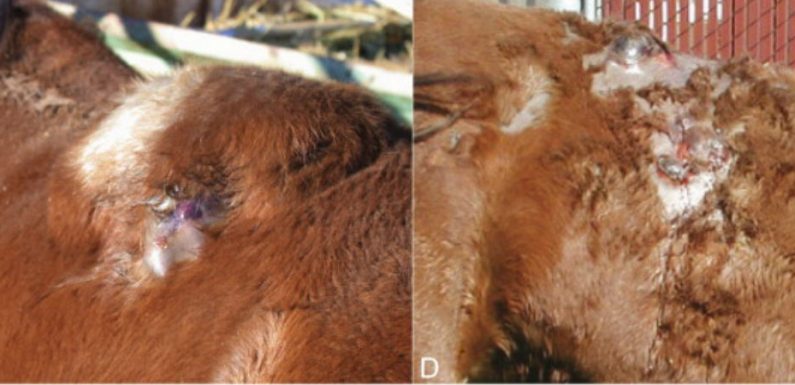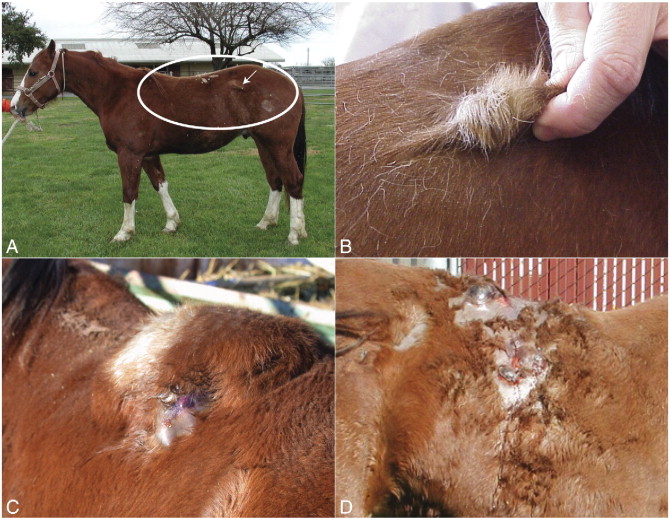
HERDA is one of the 5 tests in the 5-panel. It is useful for Quarter Horses, Paints, Appaloosas, Quarter Ponies and any other breeds with some Quarter Horse bloodlines. Horses with two copies of the HERDA gene have extremely fragile skin, particularly along their back. Their skin can rip or tear easily. The large wounds that result from this tearing are painful and like most wounds on horses carry a substantial risk of infection.
Horses with one copy of the HERDA gene (HERDA carriers) are not affected.
The HERDA carriers are most commonly found in cutting horse lines. HERDA also exists outside of the cutting horse population, but is rarer. HERDA can only occur when two carriers are mated to one another. If you have a HERDA carrier it’s easy to avoid having an affected foal: just make sure they only go to horses that have tested clear.
It’s not known whether or not the HERDA and Fragile Foal (FFS) genes interact with one another.
We’ve made even more improvements to our HERDA test. The test now requires even less DNA to give a clear result. To order HERDA testing go to our website at http://practicalhorsegenetics.com.au/index.php?dis=her. Remember to add any other colour gene or disorder tests that you want too!
